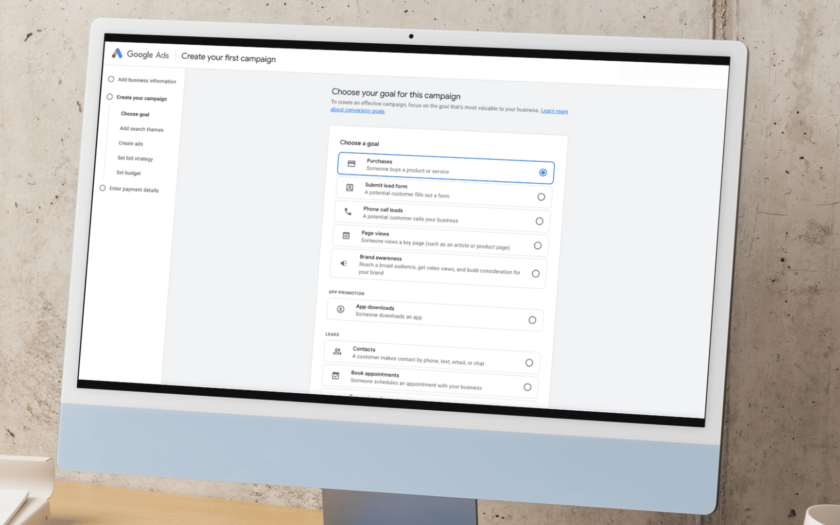Paid search is a great tool for advertising your business, but getting started can feel overwhelming and complicated.
Yes, many tools are at your disposal, but expert knowledge is not the only way to succeed in PPC. The key is knowing what to focus on and what tools to save for later.
This article outlines the core structure of a PPC campaign and provides a step-by-step guide for implementing a new campaign in Google Ads.
The elements of a PPC campaign
Campaign
The highest level of a campaign setup and what the rest of the campaign elements will live within. Campaigns are set up around major categories of how users search for your product.
For example, if you’re a clothing company, you may have a campaign for your sock category and another for sweatshirts.
You also want to have campaigns for both the branded and non-branded versions of your categories.
If I had a company called “Max Trotter Clothing Company,” I’d create:
Branded campaigns for searches like “max trotter clothing socks.”
Non-branded campaigns for people looking for my products without knowing my brand name.
Ad group
Ad groups are sub-categories within campaigns. While only one is required, you’ll often create more than one ad group to subdivide your campaign into relevant categories.
The goal here is to create ads that are as relevant as possible to the user’s search, so you’ll want to create ad groups that reflect all the different ways users can search.
Let’s go back to my clothing example. For a campaign advertising socks, you could create a single ad group based on just “socks.” But there are so many different types of socks.
I wear completely different kinds of socks when I’m lounging on the couch than when I go on a run, so it makes sense that users would search differently for those different sub-categories.
So, instead of an ad group based around “socks,” you should create multiple ad groups for smaller categories such as:
“Running socks”
“Crew socks”
“Ankle socks”
Keywords
Keywords are the core of your targeting strategy. Whatever keywords you decide to bid on are the search queries for which your ad can appear.
That’s why it’s incredibly important to do your keyword research and develop a list of high-quality keywords relevant to each of your ad groups.
Dig deeper: 19 keyword mining tools and strategies for PPC campaign growth
Ad copy
Ad copy is what users see when your ad shows up on the results page.
With Google Ads responsive search ads, you can add up to 15 headlines and four descriptions and it’s recommended that you use as many of them as possible to improve performance.
When creating ad copy, use your keywords as inspiration. For the “ankle socks” ad group, you want to have “ankle socks” prominently within the ad so it’s relevant to the user’s search.
Dig deeper: Google Ads ad copy: What works and what doesn’t in 2024
Ad assets
Ad assets (formerly extensions) are smaller additions to the ads outside of the headlines and descriptions.
These are not mandatory additions, but they improve the quality of the ad by adding useful information for the user.
Some examples of ad assets include:
